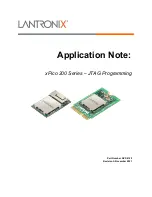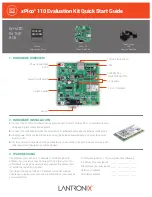
Page 9
579-1019 Rev M
4009 IDNAC Repeater Installation Instructions
Table 2: UTP wiring limit based on alarm current
2.000
132 ft
210 ft
334 ft
531 ft
845 ft
2.250
118 ft
187 ft
297 ft
472 ft
751 ft
2.500
106 ft
168 ft
267 ft
425 ft
676 ft
2.750
96 ft
153 ft
243 ft
386 ft
615 ft
3.000
88 ft
140 ft
223 ft
354 ft
563 ft
Wiring distance must not exceed 4000 ft
Table 3: UTP wiring limit based on communication
Local and extended loop Class A wiring: Total loop length from the Repeater
Local Class B wiring:
Distance to the Last Appliance
Line Impedance (Ohms)
Devices
20
AWG
18
AWG
16
AWG
14
AWG
12
AWG
14.54
1
1252 ft
2038 ft
3241 ft
4000 ft
4000 ft
12.96
5
1142 ft
1815 ft
2887 ft
4000 ft
4000 ft
11.38
10
1003 ft
1595 ft
2536 ft
4000 ft
4000 ft
10.14
15
893 ft
1420 ft
2258 ft
3590 ft
4000 ft
9.12
20
804 ft
1278 ft
2033 ft
3231ft
4000 ft
8.28
25
730 ft
1160 ft
1845 ft
2934 ft
4000 ft
7.58
30
668 ft
1061 ft
1688 ft
2683 ft
4000 ft
6.97
35
614 ft
977 ft
1553 ft
2469 ft
3928 ft
6.45
40
568 ft
904 ft
1437 ft
2285 ft
3634 ft
6.00
45
528 ft
840 ft
1336 ft
2124 ft
3378 ft
5.60
50
493 ft
784 ft
1247 ft
1982 ft
3152 ft
5.24
55
462 ft
734 ft
1168 ft
1856 ft
2952 ft
4.92
60
434 ft
690 ft
1097 ft
1744 ft
2774 ft
4.75
63
419 ft
665 ft
1058 ft
1682 ft
2675 ft
4.64
65
409 ft
650 ft
1034 ft
1643 ft
2613 ft
4.38
70
386 ft
614 ft
976 ft
1552 ft
2468 ft
4.15
75
366 ft
581 ft
924 ft
1469 ft
2337 ft
3.94
80
347 ft
551 ft
877 ft
1394 ft
2217 ft
3.74
85
330 ft
524 ft
833 ft
1325 ft
2107 ft
3.56
90
314 ft
499 ft
794 ft
1262 ft
2006 ft
3.40
95
299 ft
476 ft
757 ft
1203 ft
1913 ft
3.24
100
286 ft
454 ft
723 ft
1149 ft
1827 ft
3.10
105
273 ft
435 ft
691 ft
1099 ft
1748 ft
2.97
110
262 ft
416 ft
662 ft
1052 ft
1673 ft
2.85
115
251 ft
399 ft
634 ft
1009 ft
1604 ft
2.73
120
241 ft
383 ft
609 ft
968 ft
1539 ft
2.58
127
228 ft
362 ft
576 ft
915 ft
1456 ft
Wiring distance must not exceed 4000 ft
Table 4: Ohms per 1000 ft
Gage
Ohms/1000 ft
20 AWG
11.347
18 AWG
7.137
16 AWG
4.488
14 AWG
2.8230
12 AWG
1.7750
NOTE:
Although the required wire for IDNAC circuits is twisted pair (controlled impedance) wiring, in some applications it may be
advantageous to use existing wiring that is not twisted pair. This is only permitted if both conductors of the IDNAC circuit reside in the same
metal conduit, and only under certain conditions. Check with your local sales office before using any wiring that is not twisted pair.






































